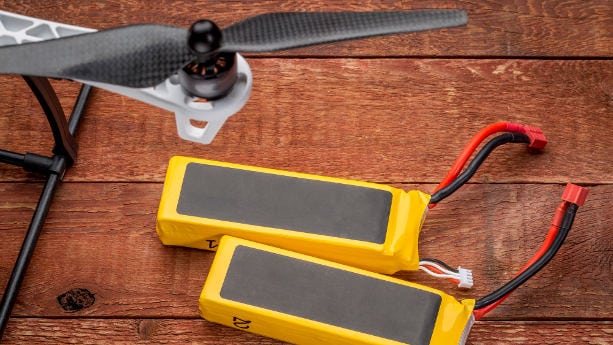Test Lithium Battery Multimeter Explanation
Oct 29, 2019 Pageview:3460
Rechargeable lithium ion batteries come in a variety of shapes and sizes. Lithium ion batteries were originally designed in the 1970s and have since become the preferred battery for a wide range of electronic devices, primarily cell phones and laptop computers. A life expectancy of about two to three years is one downside for rechargeable lithium batteries as the lithium ion batteries lose their load-bearing capacity over time.
In many situations, the battery is connected to the charging unit. It is usually located in the back panel, for example, in cell phones, which is reached by sliding off the screen. You may need to remove a few screws to reach the battery in other phones. You must review the owner's system manual or test your battery for which it is being used.
This article contains detailed explanation about lithium battery multimeter and steps to test a lithium battery with a multi-meter which will quite helpful in testing the batteries that contains lithium ion.
What is test lithium battery multimeter?
To know about lithium battery multimeter, firstly you should know what it multimeter and what are it’s applications.
Multimeter
A Multimeter is an electronic instrument or a piece of test equipment which is commonly used by every electronic technician and engineer. Multimeter is mainly used to measure voltage, current and resistance three basic electrical characteristics. It can also be used for checking continuity in an electrical circuit between two points.
Multimeter has many functionalities, such as ammeter, voltmeter, and ohmmeter. It is a handheld device over an electronic numeric LCD display with a positive and a negative indicator needle. Multimeters can also be used to test batteries, home plumbing, power supplies and electric motors.
Applications
Multimeter applications mainly involve component testing in various electrical and electronic projects and are also used in various measurement applications as well as its main application is to test batteries either they are performing well or not.
Lithium battery multimeter
Lithium battery multimeter is a device which is used to test batteries that contain lithium in it either by measuring its voltage or current to check whether the battery is in good condition or it has reach its end point.
Can a multimeter be used for accurate battery testing?
Yes, a multimeter can be used for accurate battery testing as one of the applications of multimeter is to test batteries.
As the name implies multi-meter it means that it can perform multi tasks so if you are supposed to test a battery so you can either check its voltage or its current as it perform the tasks of both voltmeter and ammeter.
In the market, there are certain multimeters that approximate a battery test load. You can add these multimeters to your toolkit greatly and can check your devices when it perform a bit different than actual to know its performance that is its voltage and current.
How do you test a lithium battery with a multi-meter?
The basic idea is to test whether a battery can provide enough amperage for a load. For this let's assume that the load is a TV remote control (RC) in our case. We will check the voltage as well as the current for a nine-volt battery.
How to check battery voltage using multi-meter
Set up a multimeter with the battery to be measured in a table. For this route, we will use a 9-volt lithium battery.
Step 1.
We're going to measure the battery voltage. To do this, use the dial switch to pick the calculation of DC voltage. We must measure DC voltage as the battery produces DC electricity.
Step 2.
We already know the battery voltage is 9V peak, so we're going to point the dial to 20V i.e. the higher range.
Step 3.
Connect the battery test samples – black with negative, red with positive – and monitor the display.
Step 4.
A value short of 9V should be read by the monitor. Since this battery has been in use for a while, it displays 8.74V, which is still enough to supply the load with power.
Step 5.
The reading looks like this for another (drained) battery.
This calculation of a battery's voltage is important in most situations to know that it works properly.
Nevertheless, let's also calculate the amperage in milliampere-hour (mAh) to ensure that it can supply enough current to a load.
How to check battery current using multi-meter
Now, by using multimeter we will measure the current of battery.
Step 1.
Using the dial, pick the current DC feature and keep it at 200mA as we know the battery's amperage will be around 100mAh.
Step 2.
Link the test samples in the same way as you did for measuring voltage and check the screen.
It should fluctuate about 98.3, which means that the amperage is 100mA–enough to power the TV remote control's tiny PCB. It should be obvious that one of its best uses is to test a battery using a multimeter.
So, if your TV or air conditioner remote control begins to be act stupid, you can quickly take out your multimeter and get answers.
Conclusion
Thus, it can be concluded that multimeter has many advantages and it can save your time as well to check the battery of your devices that contain lithium ion so it’s better to purchase a multimeter and put it in your home and whenever your device acts differently, you can check it while sitting at home. Also, when diagnosing the batteries performance, it may be a good idea to get a new one if a battery has a voltage rate that is half of its original score. This is because, when they hit the midpoint, batteries run out quicker and it lost its life so fast.
You can also test batteries using an analog multimeter. Such meters can give you a precise, direct reading on the scale rather than digital display.
It's very easy and fast to test a battery whether it's a car battery or an AA battery. The key is to try to understand different charging positions for different batteries that may be lying around (in your house or lab).
We hope that this guide has been useful in checking a multimeter battery.
- Prev Article: Portable Lithium Battery Generators
- Next Article: Lithium Ion Battery Temperature Range Investigation
Leave Message
Hottest Categories
-
Hottest Industry News
-
Latest Industry News













